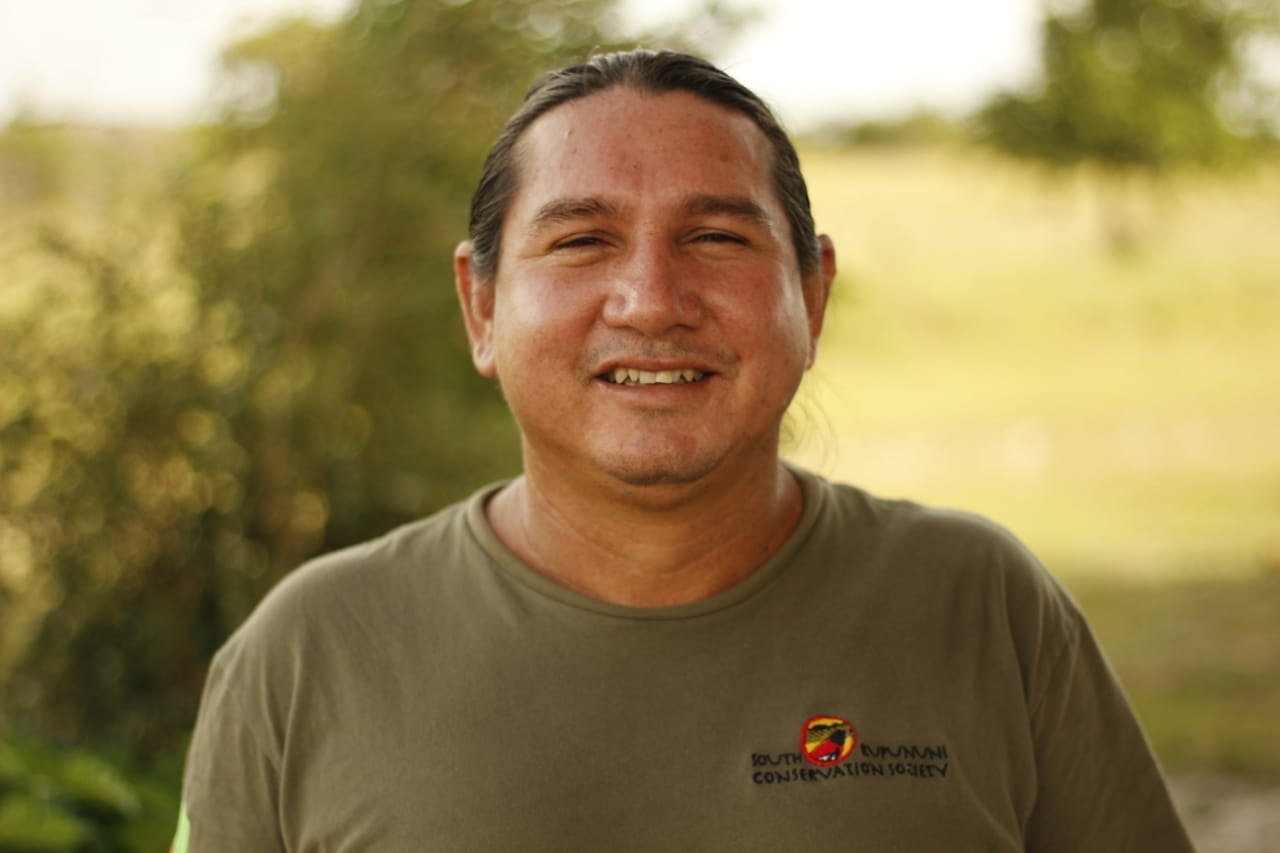The Endangered Red Siskin has become an emblematic species for conservation in Guyana since its scientific discovery in the South Rupununi savannah – a discovery that inspired the founding of the country’s first Indigenous-led conservation NGO, the South Rupununi Conservation Society (SRCS). Previously, this brightly coloured bird was only known to exist in limited areas of Venezuela, where it faces extinction due to habitat destruction and illegal trapping.
indigenous KNOWLEDGE
In 2000, a population of the Endangered Red Siskin was ‘scientifically’ discovered in the South Rupununi savannah, Guyana, by a group of friends from local Indigenous communities accompanied by international scientists. Leroy and his team say that the Red Siskin was ‘scientifically’ discovered in Guyana in 2000, as prior to this, the local communities were already aware of the presence of the bird and had a Wapichan (local language) name for it. The SRCS recognises the importance of a long-term and multi-generational approach to working with local people. Knowledge about the local habitat and wildlife, including around community farming, is shared between elders and youth, and inspiring a feeling of pride and ownership of the Red Siskin and their land.
REIGNITING TRADITIONAL PRACTICES
Since work began, illegal trapping of these birds has been eliminated in Guyana and the population has stabilised. However the Red Siskin’s grassland habitat is threatened by fires which are lit at suboptimal times and often end up in an uncontrolled state. If the fires destroy the siskin’s habitat during the nesting season, this negatively impacts the population of the species. The frequency of fire is also now increasing due to climate change, amplifying the need for controlled burning. By holding focus groups to better understand traditional burning habits versus modern day practices, the team will then train rangers from each community to complete prescribed burning throughout the year to protect the Red Siskin’s habitat.
CO-MANAGEMENT
Like many endangered species in Guyana, the range of the Red Siskin occurs across both indigenous-titled land and state land. Whilst an Indigenous community can create rules and protect the species on their own land, they cannot do this on adjacent state land. Where the government does not have the resources to monitor the state land, biodiversity is often negatively impacted. A co-management plan is therefore necessary, which can also invite an opportunity for paid employment for local people (as rangers, or managing ecotourism initiatives), allowing Indigenous communities to receive financial compensation for directly preserving their biodiversity. Successful implementation of the co-management plan for the Red Siskin could allow for replication across the country to benefit other wildlife and communities.
Leroy and his team will continue to protect the local red siskin population by using his Whitley Award to:
- Double the size of the Red Siskin Community-Based Conservation Management zone to 150,000 hectares
- Train community members in methods to reduce habitat destruction and to improve the monitoring and effectiveness of the conservation zone
- Develop a legal framework for this site, including a co-management agreement between communities and government
- Raise awareness of the Red Siskin at the local, national and international level through educational and engagement programmes
- Publish a paper on lessons learned from the project, to enable the sharing of information with other communities and stakeholders interested in developing community-based conservation initiatives
top facts:
- The Rupununi region of Guyana was the destination of Sir Walter Raleigh’s 16th century expedition to find ‘El Dorado’, the lost city of gold.
- In the early 20th century, Victorian women used Red Siskin feathers to decorate their hats and other garments.
- The Community-based Conservation Management zone includes titled land of 5 Indigenous communities (Shulinab, Sand Creek, Rupunau, Katoonarib and Sawariwau).



